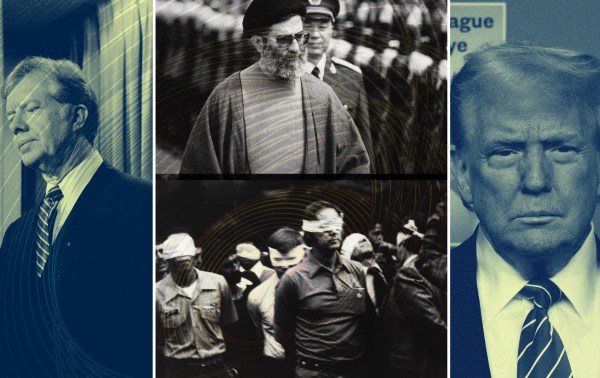In the wake of a deadly blast at a hospital in Gaza City last month, a social media influencer and self-proclaimed independent journalist named Plestia Alaqad took to Instagram to bring attention to the plight of Palestinian civilians.
“Yesterday, a complete massacre happened at Al-Ahli Hospital,” she told her more than 2 million followers, blaming the casualties on an alleged Israeli attack. “Around 1,000 civilians were killed and martyred.”
But the death toll didn’t approach 1,000 or even the more conservative figure of 500 later provided by the Hamas-run Gaza Ministry of Health. It was closer to 50. And multiple government and independent analysts attributed the bombing to a misfired Palestinian rocket, not an Israeli airstrike. Yet Alaqad’s post, which has garnered nearly 150,000 likes, is still live on Instagram.
She’s one in a network of internet users knowingly—and sometimes unknowingly—amplifying Hamas disinformation amid the terrorist group’s ongoing war with Israel. The campaign is working. Online narratives minimizing atrocities committed against Israelis and magnifying Palestinian victimhood have reached audiences across the United States and Europe, particularly among young social media users, with resounding, real-world consequences.
In a recent Harvard/Harris poll, a striking 51 percent of American respondents ages 18 to 24 deemed the brutal Hamas attack on October 7 that left more than 1,400 Israeli civilians “justified.” The viewpoint is on full display in college campuses across the country, where students equivocate and in some instances celebrate the October 7 terrorist attacks. It may be the product, at least in part, of a methodical and intentional influence campaign by Hamas and its international allies.
“They understand very well that by targeting the Western youth, they can put pressure on the leaders,” Ivana Stradner, a research fellow at the Foundation for Defense of Democracies’ Barish Center for Media Integrity, told The Dispatch. “Hamas is playing a very unfair game, because they understand that perception matters. And whoever has information superiority will win this war.” President Joe Biden’s 2024 campaign team is reportedly divided on how to handle the unfolding conflict, with younger staffers pushing for a harder line on Israel’s conduct in Gaza.
Hamas’ information warfare spans several online platforms but begins at home. The group, aware of the international community’s desire to minimize civilian casualties, uses the residents of Gaza as its ultimate trump card. By embedding its fighters and infrastructure in residential buildings and neighborhoods, Hamas maximizes the number of civilian deaths resulting from Israel’s counterterrorism campaign in the Strip. For example, the group often stores explosives and ammunition in mosques, schools, and hospitals. Hamas also inflates casualty counts, conflates civilian and combatant deaths, and, as was the case with the Al-Ahli Hospital blast, falsely attributes destruction wrought by stray Palestinian rockets to Israeli airstrikes.
The hospital bombing offered a high-profile example of how disinformation is picked up and widely disseminated by journalists, but social media users are by far the worst offenders. On X (formerly Twitter), accounts promoting false and sensationalized content about the conflict have skyrocketed in popularity. Among them is Jackson Hinkle, a right-wing influencer with just under 2 million followers—nearly 1.5 million of them gained in the last 30 days. Despite posting false information about the conflict, Hinkle has dominated the social media site’s “For you” page in recent weeks.
In one recent post, citing the Israeli newspaper Haaretz as his source, Hinkle made a number of false claims about Hamas’ initial attack last month including accusations that the Israeli government fabricated the casualty count, half of the victims were soldiers, most of the deaths were due to Israeli shelling. Haaretz clarified the same day that the post contained “blatant lies” and had “absolutely no basis in Haaretz’s reporting, then or since.” Hinkle’s original post is still live, and has been viewed more than 5 million times.
Other X users have circulated recycled footage to pin additional civilian casualties to Israel. One post showing a young child crying over the deaths of his sisters, which the poster claimed was recorded after an Israeli hospital bombing in Gaza, was actually filmed following the Assad regime’s bombing of Aleppo, Syria, in 2015. Another viral video, of a newborn being pulled from rubble after an alleged Israeli airstrike, actually depicted the deadly aftermath of an earthquake in Syria last month.
Other popular posts have featured images created using artificial intelligence. One AI-generated picture of a family escaping rubble garnered more than half a million views in a single day. Another image created using AI, of a baby trapped beneath rubble, was shared widely across X before fact-checkers stepped in. Some users have even shared footage and images from video games, including a video claiming to show the destruction of an Israeli tank in order to promote the narrative of Israel’s military vulnerability in the aftermath of October 7.
Hundreds of similar posts litter Elon Musk’s platform, despite the efforts of fact-checkers to combat them in real time. Community notes—a fact-checking tool that uses crowdsourcing—has caught several instances of misinformation, but typically only after the posts rack up thousands of views. In an effort to stem the tide of misleading and inaccurate posts about the war, Musk changed the site’s monetization policy to prevent posts corrected by community notes making revenue last month. “The idea is to maximize the incentive for accuracy over sensationalism,” he wrote in a post. But false information continues to proliferate as users call on Musk to take a tougher tack with its biggest spreaders, either by suspending or permanently banning their accounts.
Trolls, people actively spreading inflammatory and misleading information, are partly to blame for the problem, according to Stradner. Bots, which are automated accounts used in large numbers to promote certain posts, also amplify pro-Hamas talking points. “Bots and trolls are playing a tremendously important role. This war is really about the amount of messages,” she said. “Because once you pollute the information space and you confuse people, then they don’t even know what the truth is. That’s exactly what Hamas wants.”
One of Hamas’ main state sponsors, Iran, has a well-documented history of using these tactics to sow disinformation in the West. But a more covert and particularly more pernicious purveyor of false information may be at work: China.
On TikTok, a Chinese Communist Party-linked video sharing app popular among young Americans, pro-Palestinian narratives have gotten outsize exposure compared with posts promoting the Israeli perspective, implying possible state interference. Between October 23 and 30, posts with hashtag #standwithPalestine garnered 285 million views compared with posts tagged #standwithIsrael viewed 64 million times during the same period, according to an Axios analysis. Chinese social media influencers have also spread anti-Israel, and in some cases overtly antisemitic commentary, at home in China. A Wall Street Journal analysis found that mentions of the phrase “anti-Jew” on the Chinese app WeChat have grown significantly in recent days.
Russia has also fomented anti-Israel sentiment since the conflict’s start, often echoing the same false narratives it wields against Ukraine. The Kremlin’s state-run news sites have amplified voices blaming the U.S. for allegedly bringing about the war in Gaza and accusing Israel of genocide.
The information campaigns are having real-world consequences. On campuses and in cities across the U.S. and Europe, pro-Palestinian activists have unwittingly regurgitated talking points circulated by Hamas and its international supporters, including accusations that Israel is carrying out a genocidal campaign against Gazan civilians. The narratives are so incendiary they’ve often led to threats and acts of physical violence, including the intimidation of Jewish students at Harvard University, Cooper Union, Tulane, and elsewhere.
To combat the wave of propaganda, Israel needs to “go on the offensive” by debunking Hamas disinformation in real time, Stradner argued. “Whoever has information superiority in this war will win this war. Perception matters. And that’s something that Hamas understands. The problem is that war in the information space is very difficult to win if you’re a democracy, and Israel is a democracy.”
But, she added: “They do not need to spread lies, all they really need to do is spread the truth about what’s going on there. Because the truth is on Israel’s side.”
Click here for more coverage of the war in Israel.







Please note that we at The Dispatch hold ourselves, our work, and our commenters to a higher standard than other places on the internet. We welcome comments that foster genuine debate or discussion—including comments critical of us or our work—but responses that include ad hominem attacks on fellow Dispatch members or are intended to stoke fear and anger may be moderated.
With your membership, you only have the ability to comment on The Morning Dispatch articles. Consider upgrading to join the conversation everywhere.